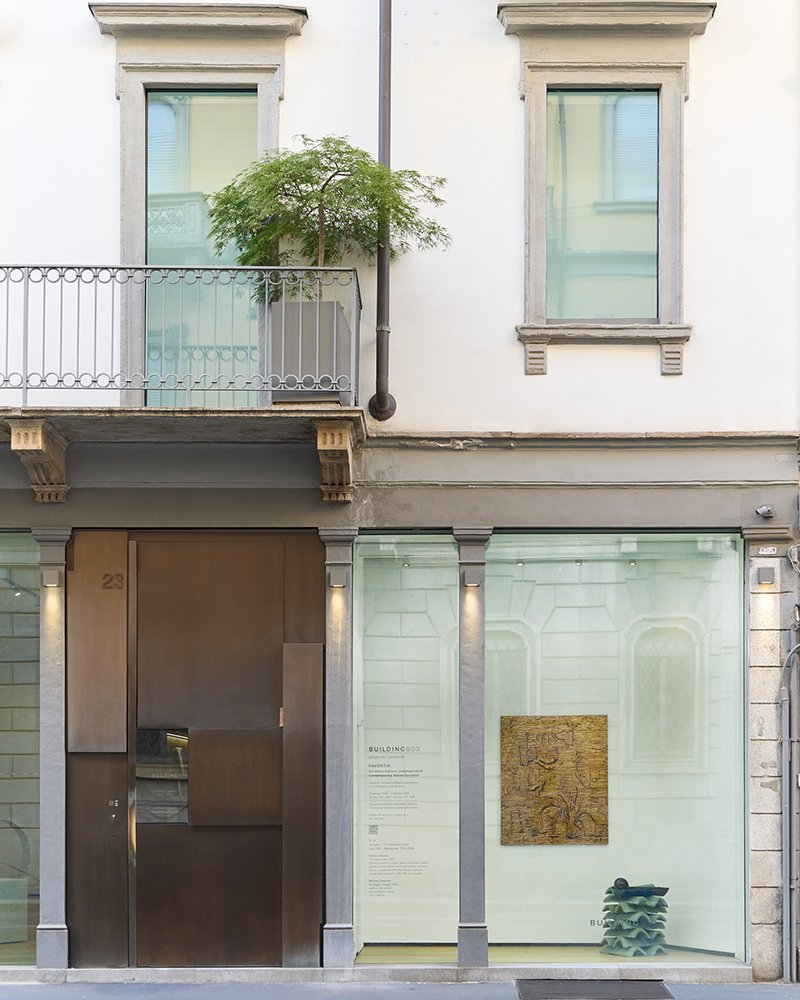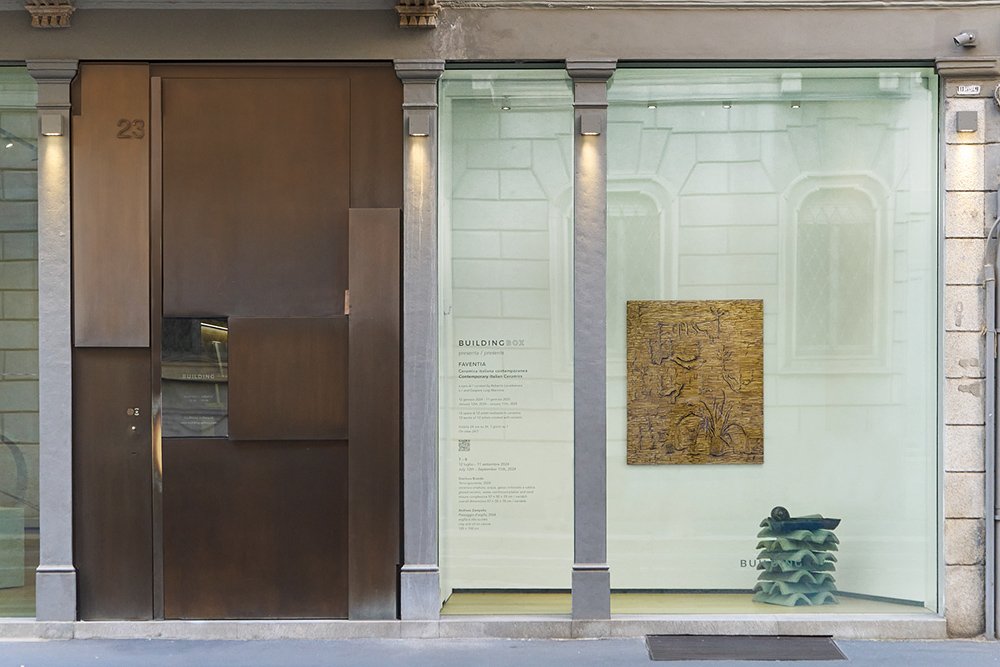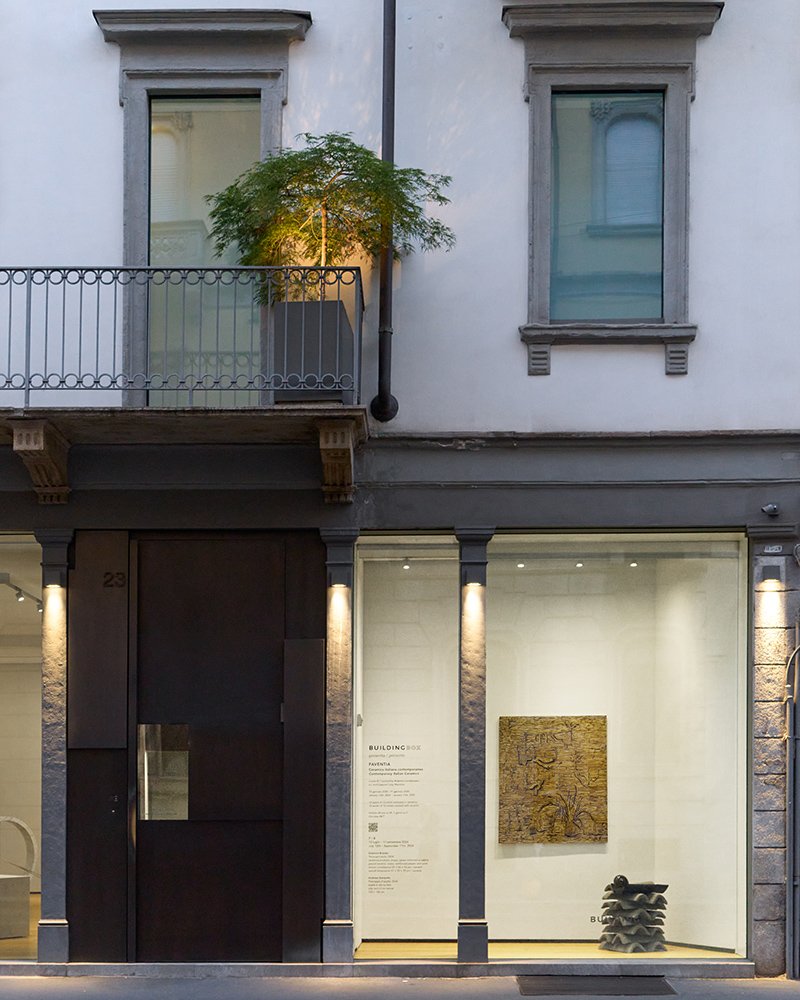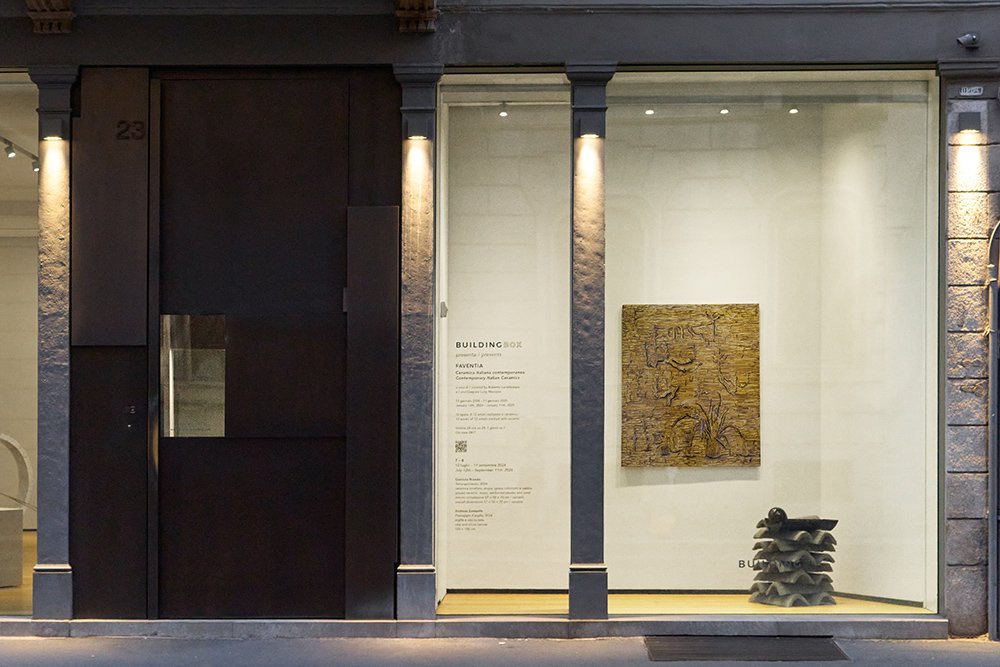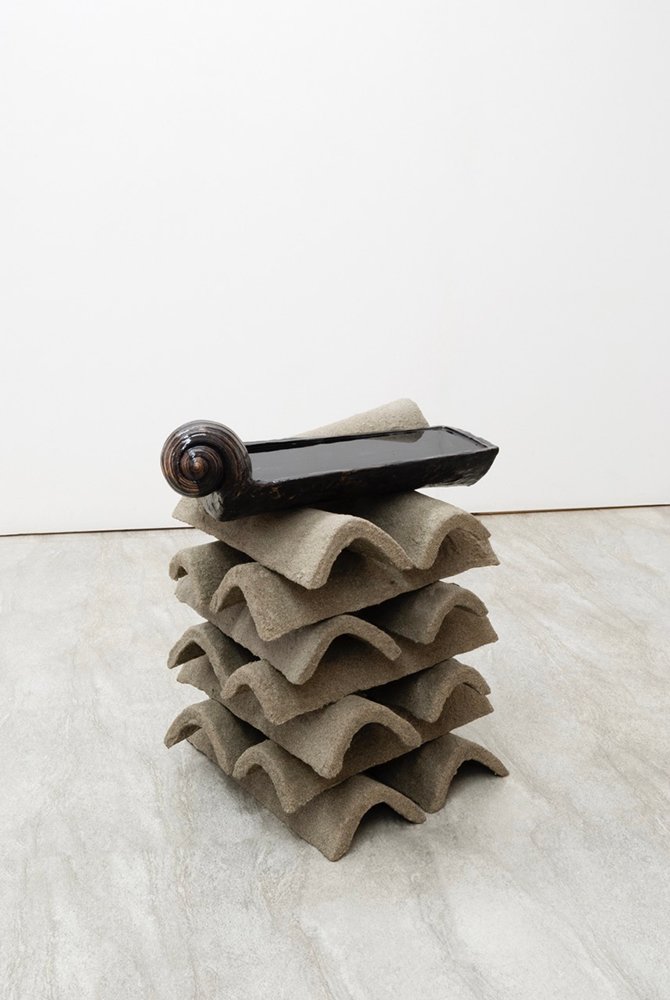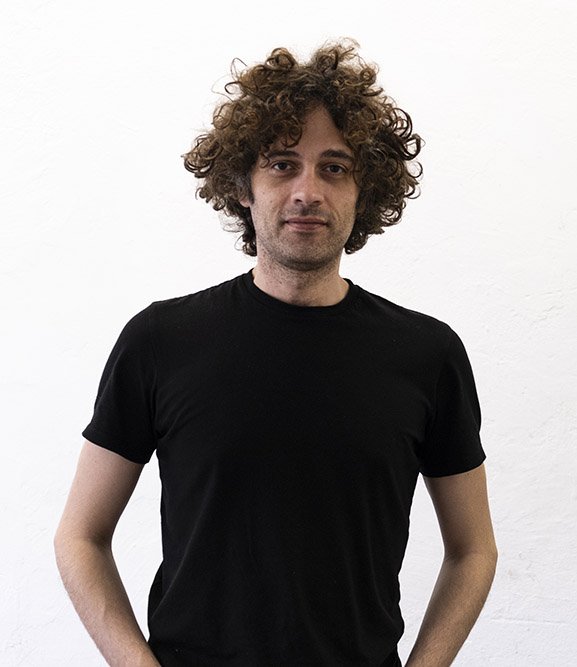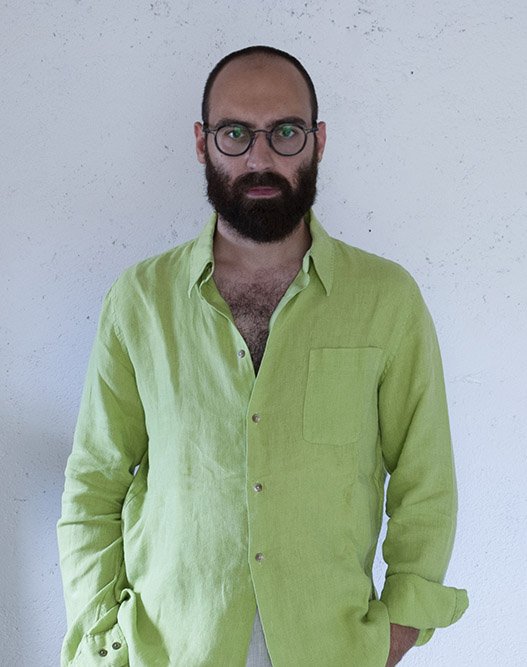FAVENTIA – 7 – 8/12. Gianluca Brando and Andreas Zampella
12.07.2024 – 11.09.2024
From July 12th, 2024, to September 11th, BUILDINGBOX hosts Terra-Spiovente (2024) e Paesaggio d’argilla (2024), respectively created by the artists Gianluca Brando (Maratea, 1990) and Andreas Zampella (Salerno, 1989).
The seventh and eighth exhibitions in the series FAVENTIA. Ceramica italiana contemporanea [Contemporary Italian Ceramics], condensed in the guise of a two-man installation that will be visible from July to September, feature artists Gianluca Brando (Maratea, 1990) and Andreas Zampella (Salerno, 1989).
The two artists, reflecting on their practices and techniques developed over recent years, have extended their gaze to several themes relating to the situation in and around Faenza after the floods of May 2023.
In Terra-Spiovente (2024) Gianluca Brando, influenced by images of Faenza’s buildings submerged by water, has reflected on the idea of human and animal “homes.” Starting from an architectural element such as the “roof tile,” traditionally made of clay for millennia, he constructed a monument-cum-stack referencing both utopian and dystopian architecture. The artist has modified the structure and function of the top-most roof tile by presenting it upside down; the glazed negative of a tile that becomes a cradle, tomb, tub, vase – with water representing an element that can give both life and death – to which he has added an appendix in the form of a shell. Certain mollusks, in fact, unlike humans, develop their shell as their bodies grow, thereby creating the ideal form and structure for their home. The water-filled zoomorphic roof tile overturns the primary function of the roof as a protective structure, a cover suitable for the draining of water. The spiral shape of the shell also becomes an ancestral symbol of eternal metamorphosis and the passage of time.
In his practice, Andreas Zampella alternates painting, sculpture and installation, frequently combining artistic genres; in his pictorial compositions he brings together objects, impressions, images of everyday life amalgamated with a dreamlike vein and surreal veiling. In many works, the artist favours the use of clay as a pigment to be spread on the canvas, “sculpting” and “shaping” the surface with light and shadow. In Paesaggio d’argilla (2024), elements such as clothing, vases, cups, and plants experience continuous metamorphosis by transmuting and transfixing each other in an almost “mud-like” form. A lacustrine, aquatic, phytomorphic scenario but linked to elements of domestic and everyday use, with a veil of tragic irony. These sinuous fragments – anatomical and botanical – break down and recompose a sui generis still life, a silent nature that has been life and that seeks life in its quotidian evolution.
From January 12th, 2024, to January 11th, 2025, BUILDINGBOX presents FAVENTIA. Ceramica italiana contemporanea [Contemporary Italian Ceramics], an exhibition project curated by Roberto Lacarbonara and Gaspare Luigi Marcone, involving twelve Italian artists invited to exhibit sculptures and installations made of ceramics. This programme is dedicated to the centuries-old artistic tradition of the city of Faenza, one of Italy’s main production districts, as well as the seat and epicentre of themed projects and museums such as the “MIC International Ceramics Museum”, the “Premio Faenza”, and the “Museo Carlo Zauli”. Furthermore, the exhibition was conceived as a tribute toward an area affected by the flood of May 2023.
As with BUILDINGBOX’s usual annual schedule, the exhibition hosts monthly interventions. In this edition, the artworks will be presented on the 12th day of each month. This “numerology” alludes to the cyclical nature and synthesis of earthly, spiritual, and temporal elements, as well as the numerous symbologies associated with the number 12 in history and cultures from different parts of the world.
The project maps and summarises some of the main artistic expressions related to the 20th and 21st centuries ceramics, promoting a series of artists from different generations who, consistently or sporadically with respect to their own production, use clay working techniques by continuing, recovering, or revolutionising the extraordinary manual skill of moulding, and the chromatic-luminist value of the glazes.
The ancient Faventia has been a land of artisan production since Roman times, a characteristic that was enhanced in later centuries. Indeed, it became synonymous of the majolica ceramics in many languages – French (faïance), English (faience). In recent years, many artists have used the Faenza kilns – also thanks to residency programmes, exhibitions, workshops, prizes, and publications – for the artistic production of medium and large-scale sculptures, often designed for an environmental development and installation purposes. The primal, demiurgic act of shaping the clay gives ceramics an exclusive status, almost an ontology, the auroral condition of sculpture. In the manipulation’s plastic immediacy that precedes the firing that crystallises the piece, there is all the naturalness of a slow, thoughtful transformation poised between design and chance. In ceramics, as in drawing, there is the seed of an origin, that appears on the surface of the image and things in the precise moment of their conception. Ceramics – beyond the categorisations between craft, art, functional objects, unique, or mass-produced piece – possesses an intermediary (or intermediality) between thought and gesture, sign and sculpture, form and colour, operating, moreover, with various natural elements such as earth, water, and fire; and by hybridising artistic languages, techniques, research, and knowledge between artists and artisans.



